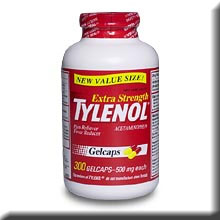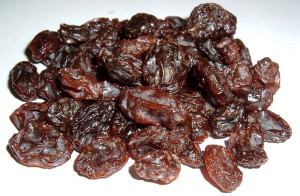Ah, fall. The leaves are turning, the air is getting chill, and people everywhere are assembling the assorted holiday regalia that autumn brings. Now we all know chocolate is bad for pets, right? I don’t need to tell you about that. Don’t leave it on the counter. Here are a few others, some well known, some less so, that many of us run into this time of year and may not realize how dangerous they are.
1. liquid potpourri

Little old ladies the world over take note: Sure, it makes your house smell like a simmering nutmeg-gy teapot. That’s exactly why those liquid potpourri warmers are so inviting to cats and dogs. Besides its scalding temperature, the ingredients themselves can cause painful damage to the delicate tissue of the mouth, throat, and esophagus. I’ve seen this one in practice and it was the astute owner who actually brought the container in for me to see; the person on the other end of the customer care line confirmed that is a known danger with these products. (Thanks to Dr. Louise Murray, whose tweet pointed me to this helpful ASPCA article linked at the beginning.)
2. sugar free gum

You’re trying to be good for the holidays, so you keep some sugar free gum on hand to keep your mouth occupied. This is one of those weird ones. Who’d have thunk it? We happily chomp away at our sugar free Doublemint without a second thought, but xylitol- the sweetener often used in these products- can cause life threatening hypoglycemia in pets. It takes very little to cause illness, which makes it even more scary. Xylitol is also found in other sugar free foods, candies, and toothpaste. The sweet taste makes it especially inviting for unsuspecting pets.
3. macadamia nuts

OK, so I don’t know anyone who hands out macadamia nut candies for Halloween, but they are certainly plentiful in many people’s nut mixes left out on the table for holiday parties. Macadamia nut toxicosis manifests in a variety of ways, from wobbliness to increased body temperature; there are a wide range of dosages that can cause toxicity. Better safe than sorry, I say, and eat them all yourself as soon as you open the can. Or send them to me.
4. Tylenol (acetaminophen)

So, maybe you overindulged a little at the office party punch bowl, and need a Tylenol to help you through your headache. In your impaired state, you leave them open on the counter. Or you see your cat has a bit of a limp, so you give them just a pediatric dose of Tylenol to help them through. Bad idea. This one is fairly well-known for people involved in animal health, but there are still a great many pet owners out there unaware of just how toxic this can be. Cats lack the ability to metabolize acetaminophen the way other animals can; the result is life threatening destruction of the red blood cells. One tablet may be enough to kill a cat.
5. Grapes and raisins

OK, all you health nuts who don’t serve alcohol, nuts, or candy at your fetes and instead put out a big fruit plate- you’re not off the hook. Keep the grapes away from Fido. The toxic property of these is unknown, but grapes and raisins have been found to cause acute renal failure in dogs and cats. Other produce such as onions and garlic are thought to be toxic in high volumes, but the exact amounts needed are unclear (as in, if onion powder is listed as the 16th ingredient in your dog food, it’s probably not going to be a problem.)
The ASPCA maintains an excellent database of articles for those wanting a more thorough rundown of poisons in the house. I use them as a reference all the time, particularly in regard to plants. The ASPCA Poison Control Hotline is well renowned as a resource for both owners and veterinarians, and I believe they maintain the most current database of pet poisons there is.






There was just an article about this on Real Simple. I learned about Xylitol, which I didn’t know, and also that you can’t give your dog onions, red wine, or raw yeasty bread dough (not that anyone would on purpose…I don’t think.)
Are those true, too, Dr. V?
It’s like you’re helping me study for boards! lol
And hopefully people know not to take Tylenol after they’ve been drinking due to the danger of pretty bad liver damage.
I learned about the dangers of onions for my dog the hard way. Maya stole about 2 cups worth of stir-fried onions off a plate on the counter. The emergency vet clinic advised me to bring her in immediately to get her stomach pumped before she could digest any of it. Apparently it would have caused all her red blood cells to rupture. Who knew?
I recently discovered 1/4 cup of raisins as an ingredient in a dog treat recipe, in a book! Although the book was written, perhaps, before this was well known, the book was purchased well after. I attempted to contact the author via the e-mail address provided in the book, and I made multiple attempts to contact the publisher. The author’s e-mail was apparently sold along with their company name and they say they don’t condone (or sell) the book that bears their company name and the publishing company never even responded at all! This book is still available in the stores.
If we can recall defective products, why not defective (and dangerous) books, or at least include an addendum, even online.
The lesson: know your ingredients and don’t assume just because it’s in writing that it’s okay. Do your homework! Read Pawcurious and other reliable source and when in doubt, just don’t.
We have to be proactive in our pet’s care and educate ourselves.
Wow- that story is shocking. Does that publishing house really want that culpability? Sheesh.
My parents’ cat Milo is in huge danger with #3. He just adores the smell of mint. Whenever I stay at their house, before bed I would have a cat on my chest trying to take in the minty freshness of my freshly-brushed teeth. He also tore apart any gum he found in the general vicinity.
A cat who likes mint? Interesting. I wonder how related it is to catnip.